Eduard Tisse
Nascimento : 1897-04-01, Liepāja, Latvia
Morte : 1961-11-18

Director of Photography
Eisenstein shot 50 hours of footage on location in Mexico in 1931 and 32 for what would have become ¡Que viva México!, but was not able to finish the film. Following two wildly different reconstruction attempts in 1939 (Marie Seton's 'Time in the Sun') and 1979 (Grigori Alexandrov's '¡Que viva México!') Kovalov has here compiled another hypothetical version of what Eisenstein's film might have been.

Himself
Eisenstein shot 50 hours of footage on location in Mexico in 1931 and 32 for what would have become ¡Que viva México!, but was not able to finish the film. Following two wildly different reconstruction attempts in 1939 (Marie Seton's 'Time in the Sun') and 1979 (Grigori Alexandrov's '¡Que viva México!') Kovalov has here compiled another hypothetical version of what Eisenstein's film might have been.
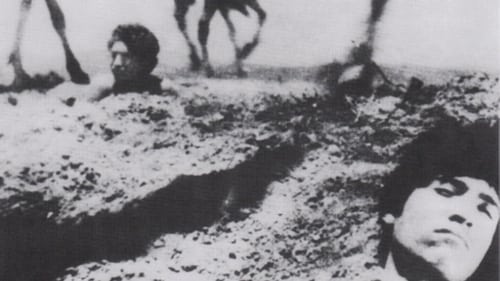
Director of Photography
Que viva México! foi um projeto de filme realizado em 1931-32 pelo cineasta soviético Sergei Eisenstein para o autor socialista americano Upton Sinclair e vários investidores, que Eisenstein acabou concebendo como um retrato episódico da cultura e política mexicanas desde a civilização pré-conquista até a revolução mexicana. Mais de 200.000 pés de filme mudo foram filmados antes que a produção tivesse que ser interrompida devido ao esgotamento das finanças e às exigências de Stalin de que Eisenstein retornasse à URSS. Esta é uma das várias tentativas de fazer um longa-metragem a partir das imagens existentes, aqui de acordo com o esboço esquelético de Eisenstein e sob a supervisão de Gregori Alexandrov, colaborador de longa data de Eisenstein, inclusive neste projeto.
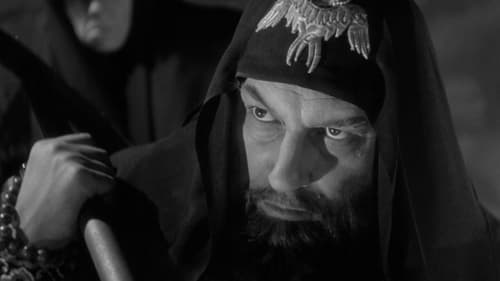
Director of Photography
This is the second part of a projected three-part epic biopic of Russian Czar Ivan Grozny, undertaken by Soviet film-maker Sergei Eisenstein at the behest of Josef Stalin. Production of the epic was stopped before the third part could be filmed, due to producer dissatisfaction with Eisenstein's introducing forbidden experimental filming techniques into the material, more evident in this part than the first part. As it was, this second part was banned from showings until after the deaths of both Eisenstein and Stalin, and a change of attitude by the subsequent heads of the Soviet government. In this part, as Ivan the Terrible attempts to consolidate his power by establishing a personal army, his political rivals, the Russian boyars, plot to assassinate him.

Himself (archive footage)
A USSR documentary about the filmmaker Sergei Eisenstein

Director
The Immortal Garrison is set in June of 1941, at the outset of the Nazi invasion of Russia. A group of Soviet servicemen, languidly biding their time at the Brest fortress on the Polish border, are suddenly galvanized into action. All desires to return home to their wives and sweethearts are swept aside as the courageous garrison unites to thwart a common enemy. The siege of Brest has served as story material for countless Russian films: in lieu of contradictory evidence, Immortal Garrison must be adjudged the best of these films. For its American release, Immortal Garrison was double-featured with another Soviet production, The Mexican.

Director of Photography
The young composer Mikhail Glinka performs his new work at a soiree at earl Vielgorsky's house. However, the public is accustomed to Western music, and reacts coldly to the creation of the composer. This makes him very sad, but soon he decides to go learn the art of music in Italy. After returning from Italy, he is full of desire to write national Russian opera. Vasily Zhukovsky proposes a subject: a feat of Ivan Susanin. Tsar Nicholas I change the name of the opera to A Life for the Tsar and assigns a librettist - Baron Rosen. Acquaintance with the future co-author shocked Glinka: Rosen speaks Russian with a noticeable German accent. The premiere was successful, but Glinka was still not entirely happy with the libretto: "False words were written by Rosen". When Nicholas I learned that Ruslan and Lyudmila was written on Pushkin's subject, he sees it as sedition. The bitter experience of the composer brighten his supporters.

Camera Operator
Soviet and American soldiers are meeting on the shores of the Elbe river in Germany in 1945.

Director of Photography

Director of Photography
Yugoslav farmer-turned-partisan Slavko Babić starts an uprising against the fascist Germans and their allies.
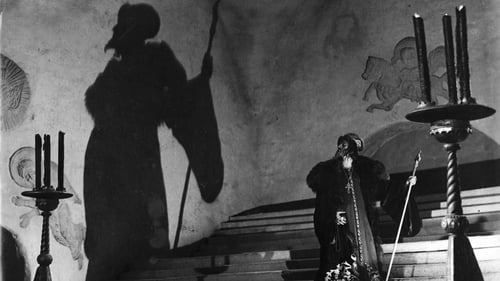
Director of Photography
Durante a primeira parte do seu reinado, Ivan, o Terrível, enfrenta traição da aristocracia e até dos seus amigos mais próximos, à medida que procura unir o povo russo.

Director of Photography
Second attempt to create a feature film out of the 200,000-plus feet of film which Soviet film-maker Sergei Eisenstein shot during 1931-32 in Mexico for American socialist author Upton Sinclair, his wife and a small company of investors. The projected film, to be called "Que Viva Mexico", was never completed due to exhaustion of funds and Stalin's demand that Eisenstein return to the USSR (he had been absent since 1929). The first attempt at editing the footage, in the USA, resulted in "Thunder Over Mexico", released in 1934. In 1940, Marie Seton, from the UK, acquired some of the footage from the Sinclairs in an attempt to make a better cutting according to Eisenstein's skeletal outline for the proposed film. This film has apparently been lost.
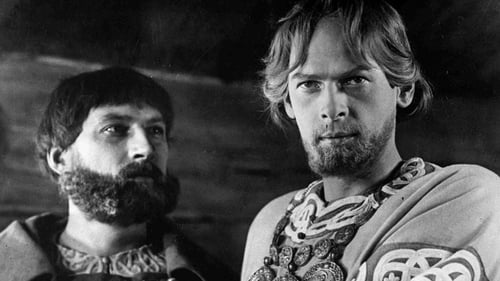
Director of Photography
A história de como um grande príncipe russo levou um exército maltrapilho para combater uma força invasora de cavaleiros teutônicos. É o século XIII, e a Rússia é tomada por invasores estrangeiros. Um knyaz' russo (um príncipe russo), Alexander Nevsky, junta o povo para formar um exército maltrapilho para combater uma invasão de cavaleiros teutônicos. Esta é uma história verdadeira baseada na batalha ocorrida num lago perto de Novgorod.

Editor
Aerograd is a 1935 Soviet film by Ukrainian director Olexander Dovzhenko, Mosfilm-VUFKU coproduction. It is a futuristic adventure story set in the Soviet Far East. Considered one of two sound masterpieces by Dovzhenko, the other being "Ivan".

Director of Photography
Durante sua aventura no México, Sergei Eisenstein fez filmagens de uma celebração mexicana do "Dia da Morte" para inclusão em seu "Que Viva México!" projeto de filme. Quando os mais de 200.000 pés de filme que ele eventualmente expôs no México foram tentados pela primeira vez a serem transformados em um longa-metragem, "Thunder Over Mexico", os produtores excluíram o material do Death Day para posterior compilação como um curta independente. Silencioso com faixa de música e intertítulos explicativos em inglês.

Director of Photography
As was common in Diaz's Mexico, a young hacienda worker finds his betrothed imprisoned and his life threatened by his master for confronting a hacienda guest for raping the girl. This film is the first of several attempts to make a feature-length motion picture out of the 200,000-plus feet of film shot by Sergei Eisenstein, on photographic expedition in Mexico during 1931-32 for Upton Sinclair and a cadre of private American producer-investors. Silent with music and English intertitles.

Director

Director of Photography
Footage of the aftermath of the January 14 1931 earthquake in Oaxaca, Mexico.

Writer
Footage of the aftermath of the January 14 1931 earthquake in Oaxaca, Mexico.

Director of Photography
Romance sentimentale is a 1930 French film directed by Grigori Aleksandrov and Sergei M. Eisenstein. A short, experimental, slightly poetic montage of city and abstract images.

Director of Photography
This film shows contrasting views of women with problematic pregnancies and the outcomes resulting when they seek out a back-alley abortionist, a trained and licensed abortion provider in a clinic, or an obstetrician capable of performing a Caesarian Section. The full film appears to be lost, but shortened versions, including one with dialogue scenes added in Germany in 1935, can be found on the internet. Additionally, Eisenstein's role in making the picture remains unclear: did he direct some or all of it, just edit it, or merely leave it to Alexandrov and Tisse to make? Released in the USA 1930 in a 65 minute (5800 ft.) version with English intertitles and a music track under the title BIRTH.

Editor
This film shows contrasting views of women with problematic pregnancies and the outcomes resulting when they seek out a back-alley abortionist, a trained and licensed abortion provider in a clinic, or an obstetrician capable of performing a Caesarian Section. The full film appears to be lost, but shortened versions, including one with dialogue scenes added in Germany in 1935, can be found on the internet. Additionally, Eisenstein's role in making the picture remains unclear: did he direct some or all of it, just edit it, or merely leave it to Alexandrov and Tisse to make? Released in the USA 1930 in a 65 minute (5800 ft.) version with English intertitles and a music track under the title BIRTH.

Director
This film shows contrasting views of women with problematic pregnancies and the outcomes resulting when they seek out a back-alley abortionist, a trained and licensed abortion provider in a clinic, or an obstetrician capable of performing a Caesarian Section. The full film appears to be lost, but shortened versions, including one with dialogue scenes added in Germany in 1935, can be found on the internet. Additionally, Eisenstein's role in making the picture remains unclear: did he direct some or all of it, just edit it, or merely leave it to Alexandrov and Tisse to make? Released in the USA 1930 in a 65 minute (5800 ft.) version with English intertitles and a music track under the title BIRTH.

Director of Photography
A farcical war between the forces of Commercial Cinema and Independent Cinema.
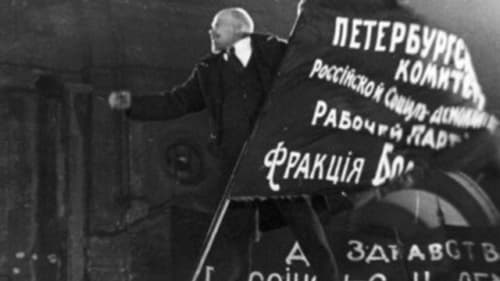
German Soldier
Em tom de documentário, o filme recria acontecimentos em Petrogrado, na Rússia, desde o fim da monarquia, em fevereiro de 1917, até o fim do governo provisório em novembro do mesmo ano.

Director of Photography
Em tom de documentário, o filme recria acontecimentos em Petrogrado, na Rússia, desde o fim da monarquia, em fevereiro de 1917, até o fim do governo provisório em novembro do mesmo ano.
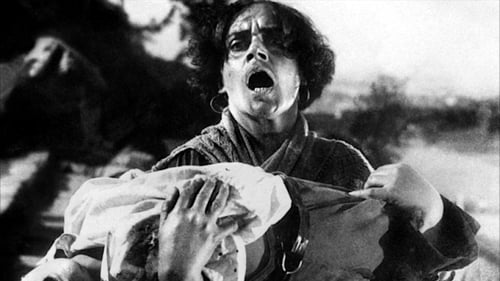
Director of Photography
Em 1905, na Rússia czarista, aconteceu um levante que pressagiou a Revolução de 1917. Tudo começou no navio de guerra Potemkin quando os marinheiros estavam cansados de serem maltratados, sendo que até carne estragada lhes era dada com o médico de bordo insistindo que ela era perfeitamente comestível. Alguns marinheiros se recusam em comer esta carne, então os oficiais do navio ordenam a execução deles. A tensão aumenta e, gradativamente, a situação sai cada vez mais do controle. Logo depois dos gatilhos serem apertados Vakulinchuk (Aleksandr Antonov), um marinheiro, grita para os soldados e pede para eles pensarem e decidirem se estão com os oficiais ou com os marinheiros. Os soldados hesitam e então abaixam suas armas. Louco de ódio, um oficial tenta agarrar um dos rifles e provoca uma revolta no navio, na qual o marinheiro é morto. Mas isto seria apenas o início de uma grande tragédia.
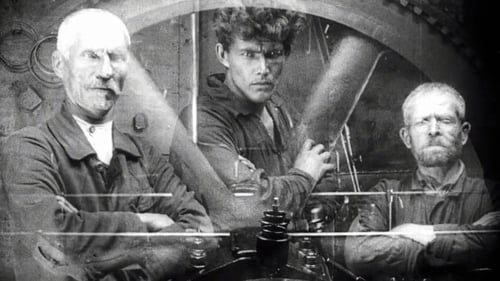
Director of Photography
O suicídio de um operário injustamente acusado de roubo é o estopim para o início de uma greve numa fábrica russa, em 1912. O lento processo de negociação expõe uma série de ações e contra-ações entre grevistas e polícia.

Director of Photography
Dziga Vertov-directed Soviet newsreel made to commemorate the first anniversary of the death of Vladimir Ilich Lenin (21st January 1924 - 1925) drawn from 'The Final Journey', a Pravda feuilleton written on the occasion of Lenin's funeral by the man who had introduced Vertov to cinema, Mikhail Koltsov. Contains: First anniversary of Lenin's death: 1. Assassination attempt on Lenin and Soviet Russia's progress under his leadership / 2. Lenin's illness, death and funeral / 3. The year after Lenin's death

Cinematography
Konstantin Eggert both directed and starred as Count Shemet, cursed by his insane mother’s traumatic experience with a bear to have seizures during which he himself becomes a “bear” on the kill. Eggert’s direction of the movie is as odd as the plot. The whole film is unsettling. The titles are too long; there are interminable shots of irrelevant action; the cutting is uneven. The heroine is unsuitably comic, spasmodically jumping around, smearing ink on her face, knocking things over. For some reason the somber, doomed count falls in love with this girl and decides to marry her.

Director of Photography
A down on his luck peasant goes to fight in World War I and returns home a hero

























